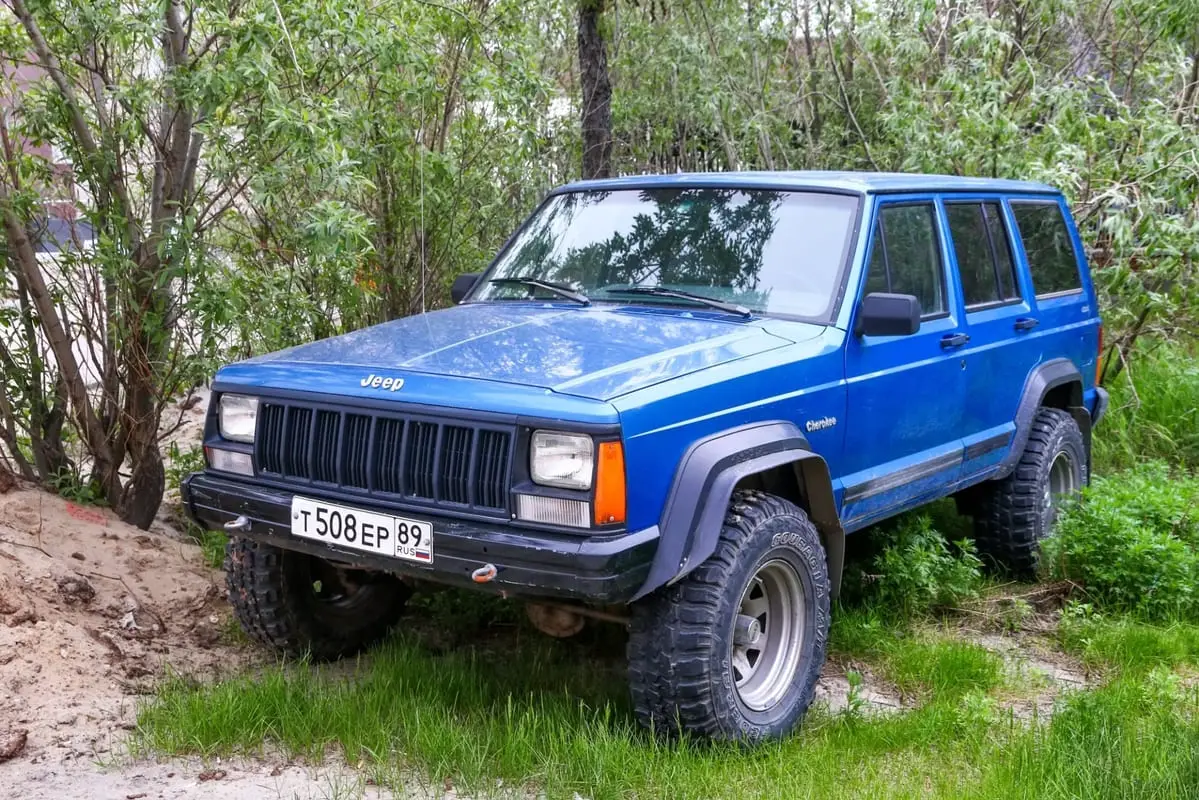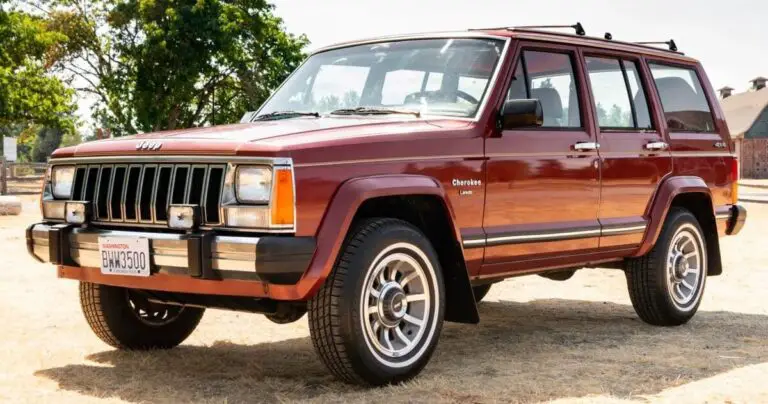Jeep Cherokee Mastery Guide

The Jeep Cherokee is an SUV produced by the American automaker Jeep since 1974. Originally a variant of the Jeep Wagoneer, the Cherokee has evolved from a full-size SUV to one of the most popular compact SUVs on the market. Now in its fifth generation, the Jeep Cherokee continues to be known for its off-road capability, cargo space, and overall versatility.
This guide will provide a comprehensive overview of the Jeep Cherokee’s history, features, trim levels, and specifications. We’ll explore what makes the Cherokee such a renowned and capable vehicle, from its available four-wheel drive systems to its variety of engine options. Whether you’re interested in buying a new or used Cherokee, or just want to learn more about this iconic SUV, this guide covers everything you need to know.
Table of Contents
A Brief History of the Jeep Cherokee
The origins of the Jeep Cherokee can be traced back to the full-size Wagoneer and Grand Wagoneer models introduced in the 1960s. In 1974, Jeep introduced the Cherokee as a two-door version of the Wagoneer. This first generation Cherokee was produced until 1983 and was noted for its signature squared-off design.
The second generation Cherokee debuted for the 1984 model year. Now a separate model line from the Wagoneer, the Cherokee switched to a more contemporary unibody construction yet retained a boxy profile. This generation also introduced the two-door Cherokee Sport and the first four-door Cherokee. It was in the second generation that sales of the Cherokee really took off.
The third generation Cherokee arrived in 1997 and featured a more streamlined design. It was aimed at competing with other compact SUVs like the Ford Explorer. This generation introduced the iconic seven-slot grille seen on Jeep models to this day. The XJ platform continued until 2001 when the Liberty replaced the Cherokee.
After an 11-year hiatus, Jeep revived the Cherokee nameplate for the fifth generation model in 2014. This version switched to a car-like crossover design based on the Alfa Romeo Giulietta. The latest 2019 Cherokee receives styling updates and new technology features. Over its long history, the Jeep Cherokee has evolved considerably while still retaining its reputation for off-road mastery.
Notable Cherokee Features and Capabilities
Four-Wheel Drive Systems
One of the Cherokee’s most renowned features through all generations has been its available four-wheel drive systems. These allow the Cherokee to tackle tough terrain and slippery conditions. Most models offer a choice between rear-wheel drive or one of two different 4WD systems:
- Command-Trac Part-Time 4WD – Basic power transfer unit engages 4WD at lower speeds for off-road driving. Rear-wheel drive only on dry pavement.
- Selec-Terrain Full-Time 4WD – Automatically engages 4WD at all times with no driver input required. Can also switch to low range for rough terrain.
- Active Drive Lock 4WD – Available on latest Cherokees, adds a locking rear differential for ultimate traction.
Towing Capability
Depending on configuration, the Jeep Cherokee can tow up to 4,500 pounds when properly equipped. This makes it capable of towing small to mid-size trailers or boats. Proper towing equipment like a hitch receiver and wiring harness is required.
Off-Road Hardware
Jeep equips the Cherokee Trailhawk models with extra off-road gear including:
- Increased ride height and ground clearance
- Underbody skid plates for protection
- All-terrain tires and tow hooks
- Hill descent control for steep slopes
These features allow the Cherokee Trailhawk models to traverse more rugged terrain.
Interior Space and Versatility
The Cherokee offers seating for up to five passengers along with generous cargo space. Rear seats fold down to create up to 54.9 cu-ft of cargo room in the latest models. There are also many interior storage compartments throughout the cabin.
For 2019, Jeep added wider cargo space and larger storage bins in the Cherokee. Available options like a cargo management system and removable utility rails add more flexibility for packing gear and luggage.
Overview of Cherokee Trims and Models
Jeep offers the Cherokee in a range of trim levels from base models focused on affordability up to luxurious trims loaded with premium features. Here is an overview of the current trims:
- Latitude – Base model with essential features like air conditioning, keyless entry, and cloth seats. Adds aluminum wheels and roof rails over the Latitude Plus.
- Latitude Plus – Lowest priced Cherokee model with basic features. Good choice for budget-focused buyers.
- Altitude – Adds exterior styling upgrades like gloss black accents and dual pane sunroof. Inside gets leather trim and power driver’s seat.
- Limited – Steps up with leather heated seats, power liftgate, and automatic climate control. Navigation is optional.
- Trailhawk – Off-road focused model with rugged 4WD system, skid plates, and tow hooks. Signature red tow hooks stand out.
- Overland – Top-of-the line luxury model with premium leather seats, navigation, and an upgraded audio system.
- High Altitude – New for 2019. Adds unique luxury styling cues inside and out. 20-inch wheels included.
This wide range of trims means buyers can choose a Cherokee tailored to their exact needs and budget. Those wanting maximum off-road performance can opt for the Trailhawk while buyers focused on comfort and tech can choose the Overland or High Altitude.
Cherokee Engine Options and Performance
The 2019 Jeep Cherokee comes with a choice of two different engines:
2.4L Tigershark MultiAir I4 – Standard engine makes 180 horsepower and 170 lb-ft of torque. Gets up to 23 mpg city and 31 mpg highway.
3.2L Pentastar V6 – Optional on some trims, makes 271 horsepower and 239 lb-ft of torque. Tow rating up to 4,500 lbs. Reduced fuel economy of 19 mpg city and 27 mpg highway.
Both engines come paired with a 9-speed automatic transmission. Front-wheel drive is standard across the lineup with three different 4WD systems available depending on trim. Performance is adequate with both engines but the V6 provides extra power for passing and trailering. The 4-cylinder engine sacrifices some acceleration for improved fuel efficiency.
Size and Dimensions
The Cherokee occupies a spot between subcompact and mid-size SUVs in terms of its exterior footprint. Here are the key dimensions:
- Length: 182.9 inches
- Width: 73.2 inches
- Height: 66.2 inches
- Wheelbase: 106.48 inches
- Ground clearance: 6.7 to 8.7 inches
Cargo space ranges from 25.8 cubic feet behind the rear seat up to 54.9 cubes with the 60/40 split-folding seats lowered. The Cherokee provides generous passenger and cargo room for a compact SUV. Keep the dimensions in mind when considering garage or parking space.
Safety Features and Ratings
Safety is a priority in the Cherokee as evidenced by its array of standard and available equipment. All models come with six airbags along with common features like ABS brakes, stability control, and traction control. Available active safety tech includes:
- Blind spot monitoring
- Rear cross path detection
- Forward collision warning with autonomous braking
- Adaptive cruise control
- Lane departure warning
In crash testing by the NHTSA, the 2019 Cherokee earns a 5-star overall rating. The IIHS gives the Cherokee top “Good” scores in all crashworthiness categories except the passenger-side small overlap front test where it earns an “Acceptable”. This makes the Cherokee a smart choice for safety-minded buyers. Proper use of safety belts and child seats is still recommended.
Owning and Maintaining a Jeep Cherokee
Fuel Economy
Fuel efficiency ranges considerably depending on engine and drivetrain choice:
- 2.4L FWD: 23 mpg city / 31 mpg highway
- 2.4L 4WD: 21 mpg city / 29 mpg highway
- 3.2L FWD: 20 mpg city / 28 mpg highway
- 3.2L 4WD: 19 mpg city / 27 mpg highway
These estimates are quite good among compact SUVs, especially with the 4-cylinder. Choose the most efficient drivetrain that meets your needs.
Insurance Costs
Due to its solid safety ratings and popularity, the Cherokee enjoys relatively affordable insurance rates. Average annual costs run about $1,200 for full coverage according to 2019 quotes. Adding options like collision coverage will increase the premiums. The Cherokee rates well among compact SUVs for insurance costs.
Maintenance and Repairs
The Cherokee has a reputation for reliability when proper maintenance is performed. The main items to watch are:
- Oil changes every 5,000-7,500 miles
- New engine air filter every 30,000 miles
- Spark plug replacement at 120,000 miles
- Coolant flush every 5 years or 150,000 miles
- Transmission fluid change every 60,000 miles with normal use
Repair costs are reasonable. Brakes, batteries, and suspension components are typical wear items. Watch for any check engine lights, warning lights, or symptoms of trouble. Extended warranties can help manage repair costs out of warranty.
Customizing and Accessorizing Your Cherokee
One advantage of the Cherokee’s popularity is the wide range of available aftermarket accessories. Here are some top ways to customize your Cherokee:
- Lift kits – Raise ground clearance for better off-roading. Must calibrate for larger tires.
- All-terrain tires – Improve traction on dirt, sand, gravel, and rocky terrain.
- Skid plates – Protect the underbody and vital components from impacts.
- Roof racks and carriers – Increase cargo space and carry gear like bikes, canoes, and cargo boxes.
- Running boards – Make it easier to get in/out while adding style.
- Locking differential – Improve 4×4 capability and traction at lower speeds.
- Wheels – Customize the look and upgrade to larger sizes to fit bigger tires.
There are also many interior accessories like seat covers, floor mats and liners, sunshades, mobile device mounts, and pet travel gear to make your Cherokee truly your own.
Common Problems and Issues to Look Out For
Even though it’s a reliable model overall, there are some common problem areas to be aware of on the Cherokee:
- Transmission Issues – The 9-speed automatic has been plagued by rough shifting and premature failures in some models. Ensure all transmission fluid changes are performed.
- Engine Stalling – Various issues like crank/cam sensors, fuel pumps, or voltage spikes can cause sporadic stalling. Diagnose and repair any problems promptly.
- Electrical Gremlins – Faulty door lock modules, power windows, and instrument clusters have been reported. Confirm proper operation of all electronics.
- Air Conditioning Failures – Leaks, compressor issues, and blower motor failures can make the A/C inoperable. Have the system inspected annually.
- Body Rust – Rocker panels, wheel wells, and undercarriage are prone to rusting. Look for bubbling paint and have any issues addressed.
While most Cherokees won’t suffer these problems, it’s smart to inspect any used model carefully before purchase. Opting for a certified pre-owned Cherokee adds peace of mind.
Finding the Right Jeep Cherokee For You
If you’re shopping for a Cherokee, keep the following tips in mind:
- Test drive different trims to find the right engine and features.
- Carefully assess condition of any used models and get a background report.
- Calculate affordability including insurance, maintenance, and repair costs.
- Determine what purpose you need the Cherokee for: off-roading, towing, family hauling.
- Compare deals online and negotiate the best price at multiple dealers.
- Inspect every function and look for accident damage or flaws.
- Ask about remaining factory warranty coverage and opt for extended warranty.
Taking your time to research, inspect, and test drive when shopping for a Jeep Cherokee will help you select the perfect one to fit your needs and budget long term.
Conclusion
Few SUV nameplates have the legendary status of the Jeep Cherokee. Its reputation for off-road mastery combined with modern comfort and technology features make it immensely capable and versatile. For active outdoor enthusiasts, families, or anyone needing an SUV with personality, the Cherokee deserves a spot on the shopping list. After reading this comprehensive guide, you have all the key facts, specs, and tips to help find the Cherokee of your dreams.







